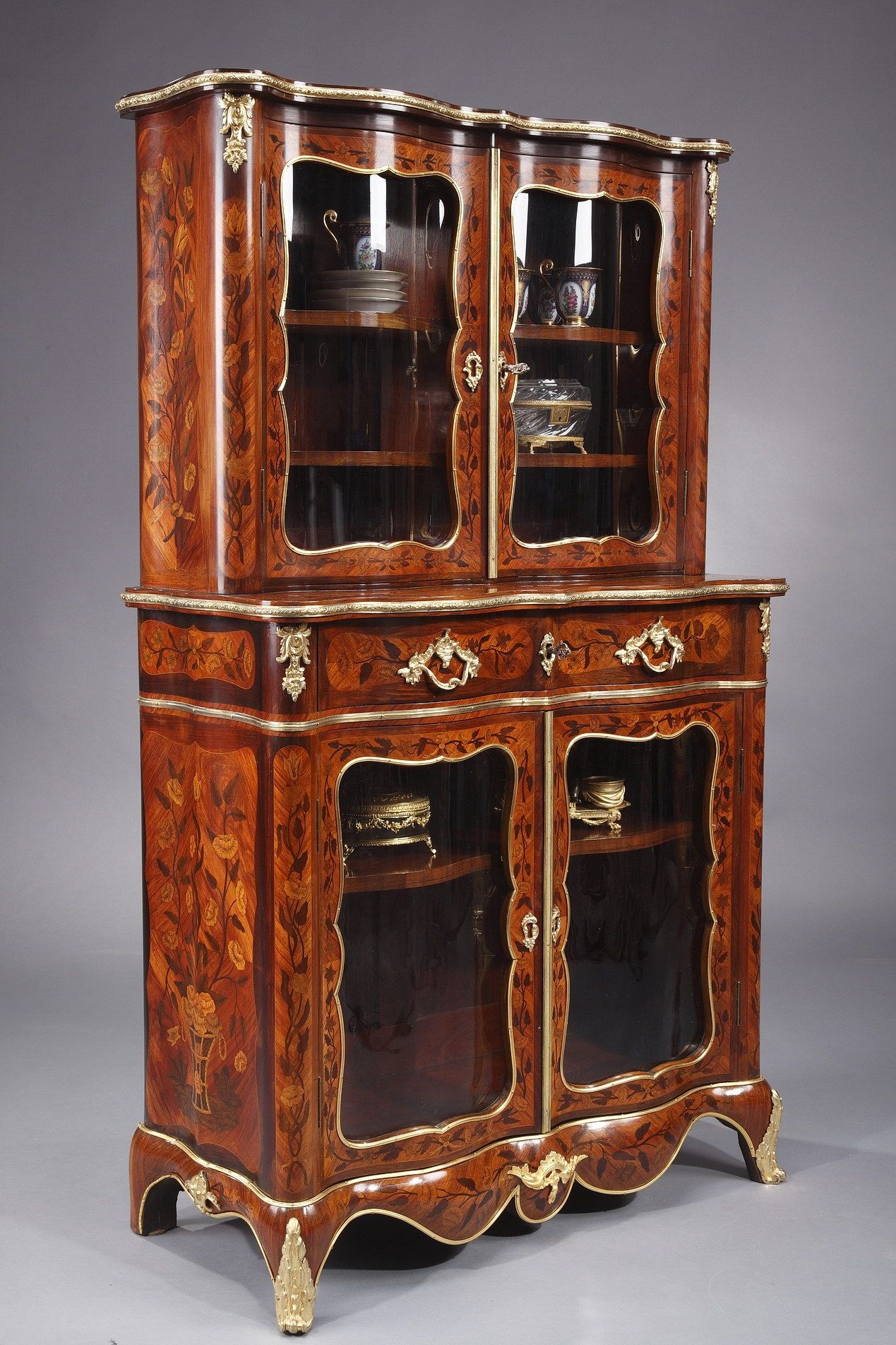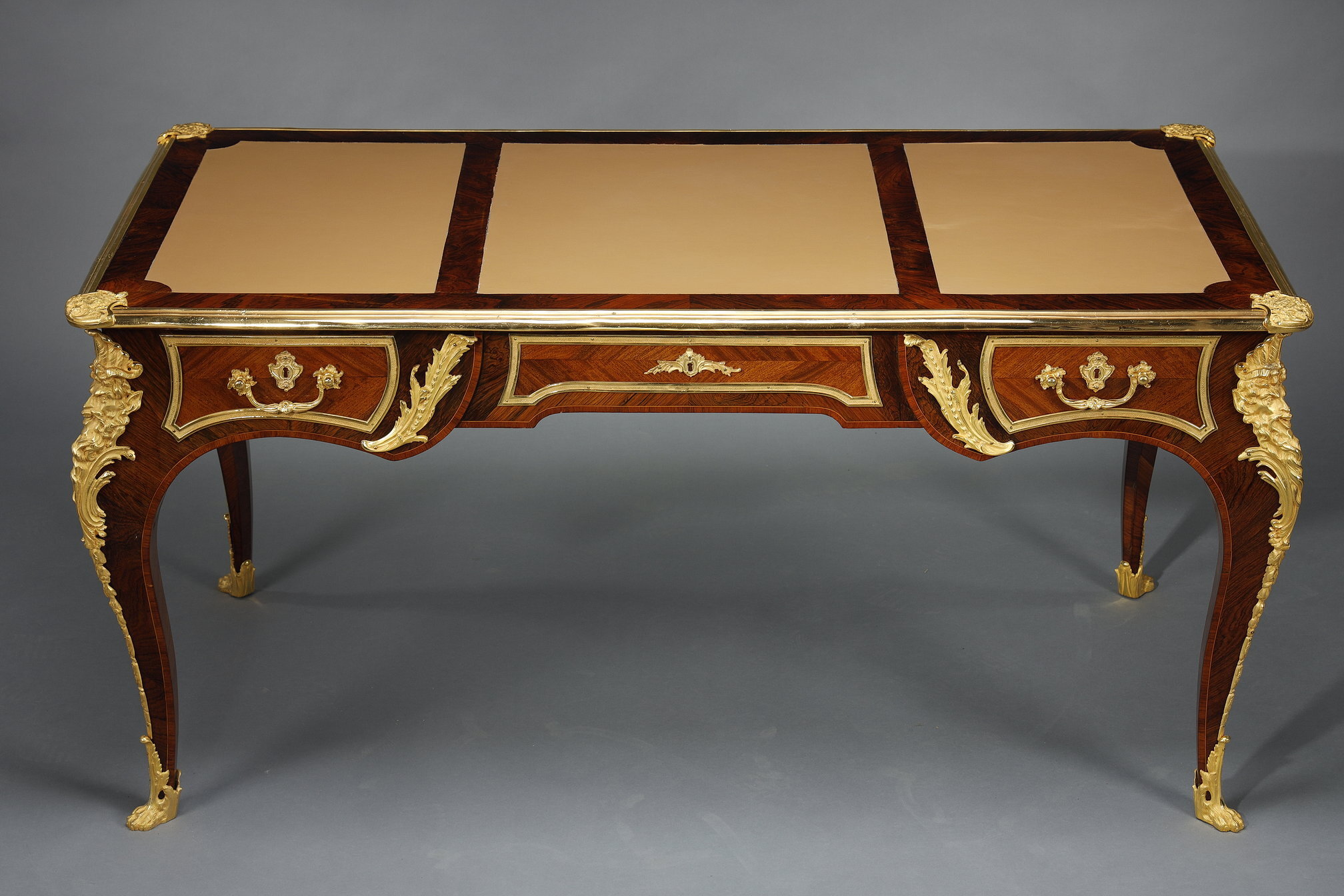The Louis XV style (1730-1760)
20.10.14
The peaceful and prosperous reign of Louis XV (1715-1774) allowed for a prodigious development of the arts, literature, and sciences. The construction of new palaces and the flourishing of painting and sculpture gave rise to a new art of living in which the talent of artisans and cabinetmakers was expressed. This was the golden age of French decorative arts .
 Louis XV style gilt bronze mantel clock
Louis XV style gilt bronze mantel clock
With its elegant and refined curves, the brilliance of its marquetry, and its wealth of invention, the Louis XV style is considered by the world to be the most representative of French taste. It developed primarily in the second quarter of the 18th century (from approximately 1730 to 1760). More commonly known as the Rococo or Rocaille style, its decorative repertoire draws inspiration from the shapes of seashells, Italian Baroque art, and Far Eastern art.
The furniture
The Louis XV style is undoubtedly the greatest period in French furniture design. Materials were highly varied and techniques remarkable. Forms multiplied and adapted to all needs: furniture became practical and functional without losing its elegance.
 Louis XV style marquetry display cabinet, 19th century
Louis XV style marquetry display cabinet, 19th century
Under Louis XV , forms varied endlessly. To satisfy distinguished occupations and elegant leisure, all sorts of small pieces of furniture were invented, each with a specific purpose: work tables, coffee or tea tables, dressing tables, and powder tables. Consoles, chairs, and sofas in oak, walnut, or poplar were countless in their diversity.
The variety of materials is combined with the multiplicity of forms. The evolution of Louis XV style furniture is characterized by serpentine contours, and rounded, serpentine shapes. Alongside gilded wood used for consoles, overmantel mirrors, and state chairs, marquetry in various colored woods appears, followed by various varnishes, imitations of Oriental lacquers.
Bronze features prominently in interior design, appearing as sconces, candelabras, and numerous ornaments applied to furniture. Intended to both decorate and protect the furniture, these ornaments are often gilded with ground gold, but more frequently, they are varnished in a gold color. In addition to gilded bronze, marble tops follow the sinuous lines of the furniture's facades, adding sumptuous touches of color.
Ornamentation

A Louis XV style flat desk adorned with gilt bronze mounts
Under Louis XV, it is easily recognizable by its fantastic movement and vibrant life, which contrast with the rigidity of the previous century. It is characterized by the use of curved lines, rocaille, a pronounced taste for asymmetrical plant motifs, and exotic themes.
The curved, undulating line , used systematically, softens the forms and patterns. But the sinuosity does not exclude a certain firmness: the C or S lines arch nervously or bend gracefully.
Rocaille rocaille was first given to a bronze or earthenware rock forming the base of an object, then the term was extended to any tormented production to define an entire way of feeling and seeing.
Exoticism was omnipresent in the mid-18th century: first, people copied imports from the Far East, then they developed fanciful decorations made up of Chinese characters, exotic birds and pagodas.
Decorative motifs are common to bronzes, goldsmithing, carved wood, and marquetry. Their themes are drawn from flora and fauna. Cartouches are convex, slanted, and framed by rocaille motifs. The shell, frequently used, is irregular and jagged: it is serrated, openwork, or pleated. Flowers are stylized: in bouquets or garlands, they are ubiquitous, surrounded by stylized, often gilded, foliage. The acanthus leaf is intimately interwoven with all rocaille motifs. Finally, attributes are highly prized: amorous attributes , hunting attributes, musical attributes, or pastoral attributes.
The Rococo style , this very French expression of a Baroque tendency in ornamentation, was considered excessive and tired of a portion of the wealthy clientele, including Madame de Pompadour, the king's mistress and a highly influential figure in the arts. Along with her brother, the Marquis de Marigny, a proponent of the so-called "Greek style" and a return to the ornamental repertoire drawn from classical architecture, Madame de Pompadour tempered the excesses of the Rococo. Symmetry reappeared in ornamentation, while the curves of furniture regained straighter lines: this was the evolution toward the so-called "Transitional" style , which would lead, under Louis XVI, to Neoclassicism.


